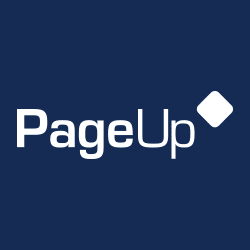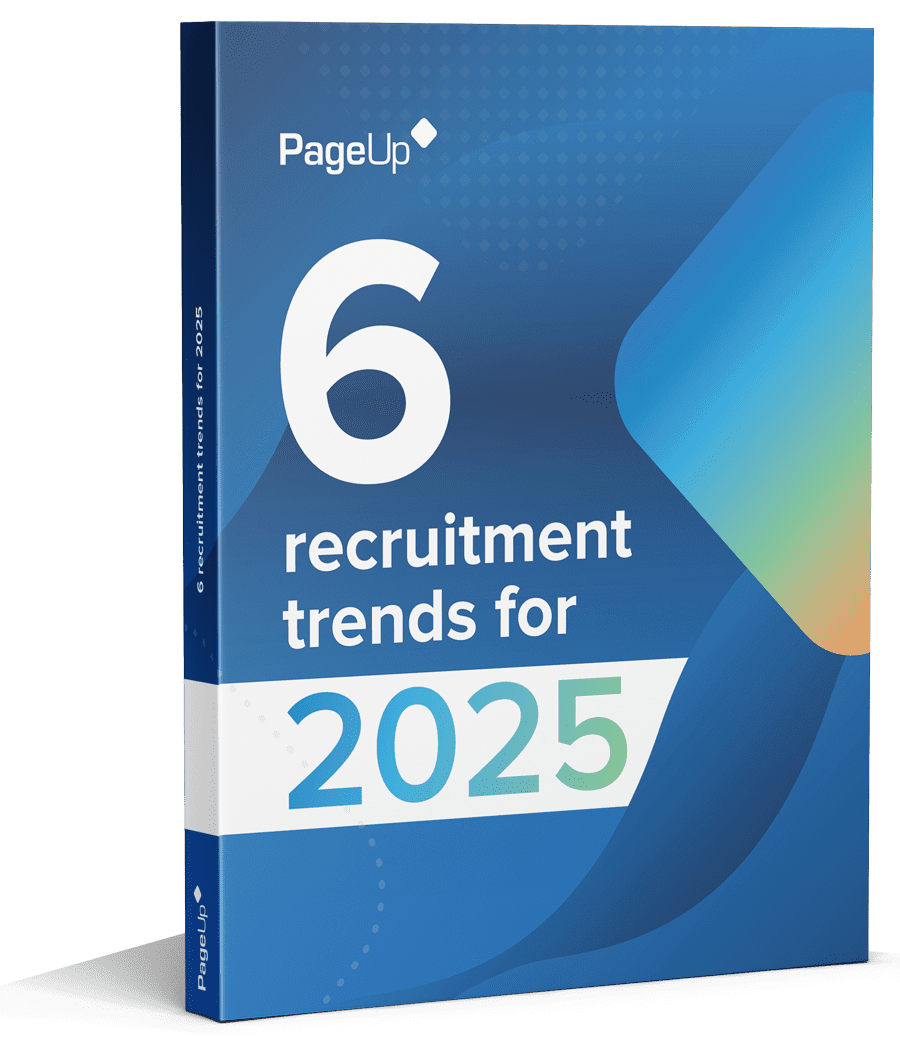2018 will see some game changers in the recruitment space, along with an acceleration and shift of known trends. Globally, sourcing high-quality candidates for key roles will continue to be a key competitive advantage.
New technologies are both contributing to, and assisting to resolve hiring challenges. The key is how we maintain the human element in the experiences for everyone involved in the hiring process. Technology is a facilitator – it doesn’t replace us and the connections we make person-to-person.
Are you ready?
This infographic wraps up our top ten talent acquisition and recruiting trends for 2018 – highlighting how prepared HR teams are for upcoming game changers.

Top 10 hiring trends to watch
1. Talent Relationship Management will accelerate quality hires
Many organisationsorganizations have bought into the hype cycle of proactive sourcing and adopted Candidate Relationship Management (CRM) software to create and maintain a relationship with candidates, with varying degrees of success. This is no longer enough. The savvy recruiter understands the focus is on talent rather than candidates. Talent Relationship Management (TRM) goes beyond just candidates to encompass contingent workers (external talent networks) and current employees (internal talent pools) in a holistic approach to identifying, engaging and building talent networks.
There is a temptation to think of TRM and recruitment as a standalone function rather than as part of the larger integrated talent management piece. The reality is 40% of companies say their highest-quality hires are internal candidates – so rather than hiring trends we should also focus on promoting trends. Mercer has found that 79% of organisationsorganizations are focusing their efforts toward building and promoting their own talent from within, and nearly half (48%) are increasing their recruitment from the external labour pool. Yet, in our own research only 41% of organisationsorganizations have well-established processes for moving talent between roles, and just 37% understand current skill gaps.
40% of companies say their highest-quality hires are internal candidates. Click To Tweet
2018 is the year that TRM will hit the mainstream. We’ll see most large organisationsorganizations investing in the right people and tools to support this new way of finding talent. What are the benefits? Recruiters who use proactive sourcing and TRM tools have a higher candidate conversion rate. In fact, PageUp has found they make over three times as many offers and the offer acceptance rate was 93% compared to the market average of 89%.
2. A social recruiting strategy is essential
According to Aberdeen Group, best-in-class companies are 32% more likely to engage candidates via social media. Investment in social media strategies, recruitment marketing, and increasing use of social listening tools will reach even the most stalwart laggards in 2018.
Any disconnect between what employers are trying to ‘sell’ and the reality of working in an organisationsorganizations is quickly uncovered on social media. Over 60% of organisationsorganizations say strengthening their employer brand is a top priority. Are you actively managing your Glassdoor rating yet? According to their research the average job seeker reads at least six reviews in the process of forming an opinion on a company.
Candidates are turning to social media in droves with 79% using it in their job search activities. In contrast, organisationsorganizations have been slower on the uptake. Our own research has found that only 49% of Australia’s largest companies and 40% of US Universities allow candidates to share a job on social media. Adoption is even lower in Hong Kong (6%) and Southeast Asia (10%). Social media provides free access to millions of candidates. Astute recruiters are going beyond Facebook, LinkedIn and Twitter to Instagram, Pinterest and Snapchat in a bid to link to all demographics.
79% of candidates use social media in their job search. Click To Tweet
3. Agility is prioritisedprioritized over experience
Chances of living to 100 have increased from 20 million:1 to 50:1 in low-mortality countries. Longer lifespans, amongst other trends, make it critical to shift from the idea of people having single lifelong careers to a portfolio of experiences, and a shift from linear progressions in organisationsorganizations to matrix career progression. Hiring people who can adapt quickly to the changing face of technology and rapid economic shifts will be critical for recruitment strategies in 2018 and beyond.
In 2016, only 53% of companies were confident that their talent acquisition strategies were building future workforce capability. Less than half (48%) believed new hires were recruited based on capabilities such as learning agility, innovation and collaboration. The skill shortage continues to weigh heavily on the minds of CEOs – 77% are concerned it will impact company growth and it’s the soft skills they value most: problem solving, adaptability and creativity and innovation – that are hardest to find.
To build a sustainable high-performance culture of engaged, innovative and creative people requires a shift in emphasis beyond hard skills to learning agility. In response, 30% of CEOs are changing their talent strategy to focus on skills and adaptability in their people and 78% of CEOs have altered their talent strategies to support the employment structure and skills needed for the future.
4. Mobile, finally
There are now more mobile devices on the planet than people. We are prolific users, with the mobile device the last thing looked at before going to sleep and the first thing reached for in the morning. So why are we listing mobile as one of our recruiting trends for 2018 – isn’t it a done deal? No, because the majority of organisationsorganizations are lagging behind candidate expectations.
According to Glassdoor, 89% of job seekers say their mobile device is an important tool for job searching and 45% use it to search for jobs at least once a day.
Yet, our research has found only 29% of Australia’s, 30% of Hong Kong’s largest companies, and 32% of the largest universities in the US have fully mobile-optimisedoptimized career sites. Numbers were even lower in Southeast Asia (10%).
In 2018, we expect more organisationsorganizations to adopt a mobile-enabled application process as companies catch up to candidate expectations. Already, 48% of job seekers believe mobile devices will be the most common way to search for jobs within two years and PageUp research reveals 16% of submitted applications come via a mobile device.
5. Artificial Intelligence will impact capacity and skills required
HR teams need to get ahead of the curve here and understand not only the impacts of AI on their workforces, but also the benefit of incorporating new and exciting tools into their workflows, especially for recruitment. With a plethora of startups out there in this space, it’s easy for talent acquisition teams to experiment and find what works for them.
Across the board, AI and bots will have an impact on how people work, and the skills required. Gartner predicts that by 2030, 50% of high-performing employees will regularly and seamlessly redistribute workloads across personalisedpersonalized portfolios of talent bots. This future seems especially likely given Adobe’s prediction that 66% of UK office workers say they already want an AI assistant to help get work done. Further surveys by Deloitte indicate that 50% of companies plan to retrain staff for this eventuality. But then why is it that at 65% of those companies, HR is not involved in this process?
6. The Gig Economy will continue to impact how work gets done
Self-employment is an aspirational goal for over 50% of the workforce. A study by Mavenlink found that given the opportunity, 65% of workers would pursue contract work. Whilst it’s not a new addition to hiring trends, it’s still worth calling out that flexibility is key, with the option to work remotely influencing the likelihood of accepting a position for 68% of new workforce entrants.
Self-employment is an aspirational goal for over 50% of the workforce. Click To Tweet
Mavenlink also found that 79% of executives believe the agility of contractor resources provides a competitive advantage. In the next five years, it’s not hard to believe that up to 50% of the workforce will engage in freelancer and contract work.
We expect that the dynamics of organisationsorganizations will continue to change by accommodating new working styles and a more distributed networks of talent. HR will have to play an advisory role in supporting their business stakeholders to find the best resources for the job from a variety of sources. We predict the talent acquisition role will expand to proactively managing internal and external networks of talent.
7. Augmented and virtual reality
Each week there seems to be a new video interview provider cropping up. While video will remain important for various types of recruitment, augmented and virtual reality are likely to get air time with recruiters and candidates in 2018. With the AR platform wars heating up, we’ll see Apple, Facebook, and Google all pushing for new apps to utiliseutilize their technologies. Candidate attraction and experience will see early innovation with examples including VR workplace experiences, VR assessments, and interactive job advertisements – using AR apps like Blippar, and Wallame.
8. People analytics powers data-based decisions
We’ve known for many years that companies that implement data and analytics into their organisationsorganizations show higher productivity and profitability than their peers. We anticipate increased funding and resourcing for dedicated people analytics teams in 2018, as access to the insights people data can provide becomes business as usual.
Despite the fact that 71% of companies see people analytics as a high priority, organisationsorganizations still struggle. Deloitte reports that as little as 8% of organisationsorganizations surveyed believe they have usable data. PageUp research reveals only 29% of companies (including customers and other organizations) reported they were confident that they have robust analytics that measure the effectiveness of talent acquisition.
9. Banishing the ‘Sunday night cliff’
We’ve heard the term ‘Sunday night cliff’ used to describe the experience of employees transitioning from all the wonderful consumer based technology they use at home and in their personal life to the archaic systems enterprisesenterprizes force their employees to use. For many companies, candidates are also consumers. This means all interactions during the recruitment experience influence your company brand. Employer branding, the application process and selection tools inform candidates about your organisationorganization’s purpose, culture and priorities. Is your organisationorganization tech savvy and forward thinking? At every touch-point: ease, speed, mobile and social capabilities should be embedded.
Technology contributes to the experiences employees have at work, but only 22% of executives believe they’re excelling at creating a differentiated employee experience. Deloitte’s research has also shown that organisationsorganizations with highly-engaged employees experience a 3 year revenue growth 2.3 times greater than average. This is set to change as more and more companies apply what they know about creating great consumer experiences to their employee experiences.
Two tips: communicate, and seek feedback from your candidates, even if you think you’re over-communicating, it’s seen as a positive differentiator.
10. HR Tech Startups will explode
HR Tech in Las Vegas this October was the biggest we’ve ever attended – there were many new point solutions for recruitment, and HR in general. This makes sense as according to CB Insights, there were 402 deals worth around $2.2B (US) in 2016 alone. Our advice – run short sharp experiments, try out these technologies for one-off campaigns or graduate recruitment and see what works for your company.
One example, Pymetrics, captures >1M data points across 90 dimensions, using neuroscience as the basis of their recommendation and prediction engine. These models help to reduce bias (introduced by recruiters and interviewers) and identify higher-quality candidates. In a similar vein Hirevue records your facial expressions, word usages and applies a machine learning algorithm to identify top candidates. Expect to see flourishing API ecosystems and more providers mashing AI, gamification, new technology, and scientific research into selection tools.
Can we help?
If people are essential to your success in 2018 we can help you ensure that you’re well-placed to attract, retain and grow high-quality talent with the latest talent management technology. Let’s chat about how PageUp can help?
Fresh insights for HR
Stay up to date with HR trends, tips and more when you sign up for our industry newsletter






